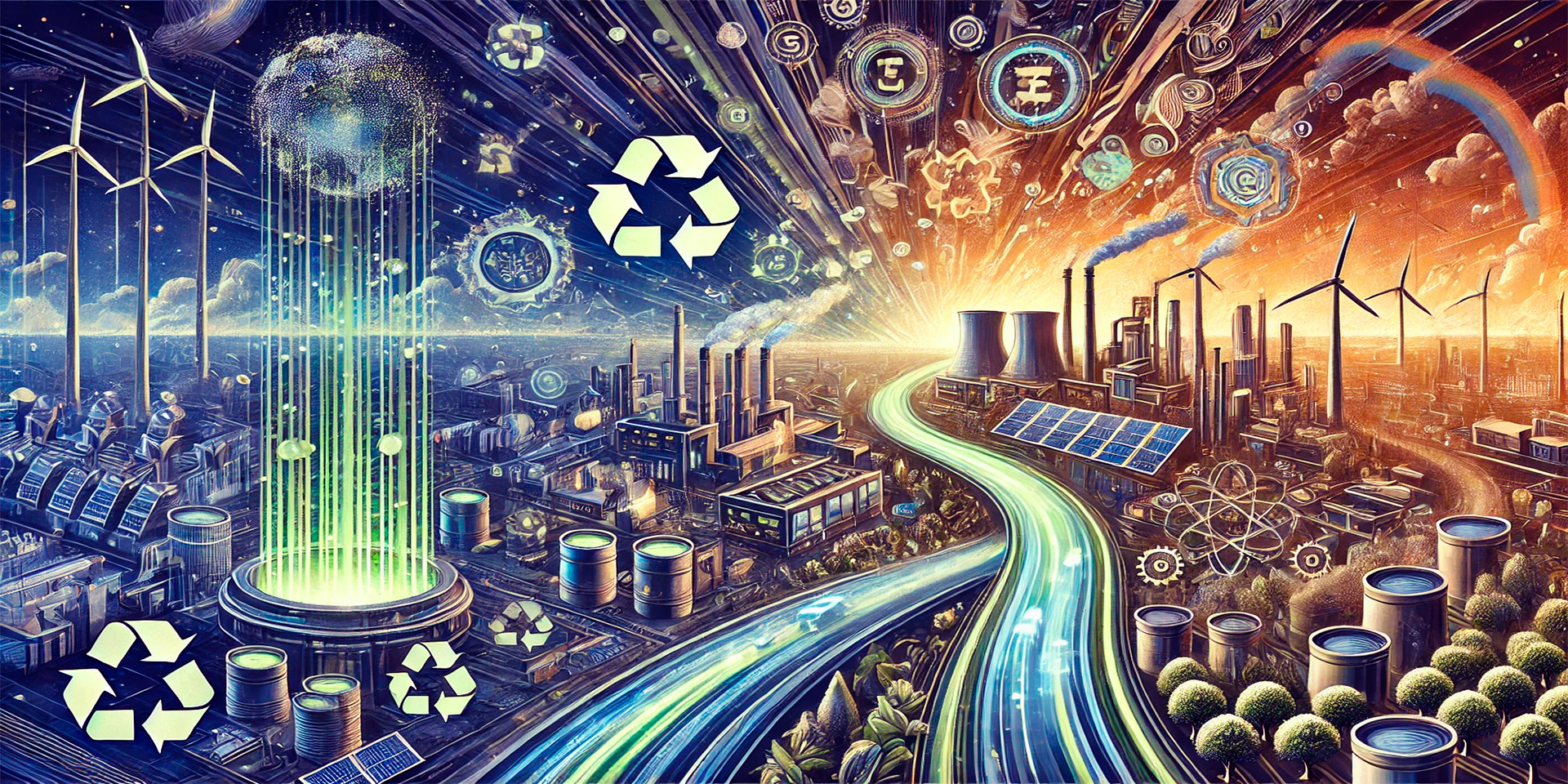The recycling sector plays an essential role in the global effort to reduce waste and conserve resources. However, as the demand for more sustainable practices grows, so does the need for technological advancements in recycling methods. State-sponsored loans are emerging as a powerful tool to fund research and development (R&D) in eco-friendly recycling technologies. By providing the necessary financial backing, these loans enable companies and innovators to create and implement new, more efficient recycling processes, driving the transition to a circular economy. In this article, we will explore how state-sponsored loans are fostering innovation in the recycling industry and the role they play in advancing eco-friendly technologies.
Understanding State-Sponsored Loans for Green Innovation
State-sponsored loans are financial products offered by governments or government-backed institutions to promote specific objectives, such as supporting the development of environmentally friendly technologies. These loans are typically low-interest, long-term, and come with favorable terms that encourage businesses and researchers to innovate without bearing the full financial risk. In the recycling sector, these loans are primarily aimed at funding R&D into technologies that improve recycling efficiency, reduce waste, and decrease the environmental impact of recycling operations.
1. The Role of Government in Promoting Green Innovation
Governments worldwide are increasingly focused on reducing carbon emissions, conserving resources, and achieving sustainability goals. By offering state-sponsored loans, they are incentivizing businesses to invest in green technologies that contribute to these objectives. The recycling industry, with its potential to reduce pollution and waste, is a prime candidate for such investments.
How government loans foster green innovation:
- Funding R&D: State-backed loans help finance research into new recycling technologies, such as advanced sorting systems, chemical recycling methods, and biodegradable plastics alternatives.
- Reducing environmental impact: These loans support initiatives that focus on minimizing the environmental footprint of recycling, such as reducing energy consumption, water usage, and greenhouse gas emissions.
- Encouraging private sector investment: Government loans often act as a catalyst for private sector investment, signaling that the government supports sustainable business practices and creating an attractive environment for eco-friendly innovations.
Types of Green Innovations Funded by State-Sponsored Loans
State-sponsored loans are being used to support a wide variety of innovations within the recycling sector. These innovations span across industries such as plastics recycling, metal recovery, electronic waste recycling, and more. The goal is to improve the efficiency, cost-effectiveness, and environmental impact of recycling processes, ultimately advancing the transition toward a circular economy.
1. Advanced Sorting and Processing Technologies
One of the most pressing challenges in the recycling sector is efficiently sorting and processing different types of materials. Traditional recycling methods often rely on manual labor or inefficient machinery that can only process certain materials. State-sponsored loans are funding the development of advanced sorting technologies, such as artificial intelligence (AI) and robotics, which can automate and optimize the sorting process.
Innovations in sorting and processing:
- AI and machine learning: AI-driven systems can identify and sort various materials based on their chemical composition, size, and shape, leading to higher recycling rates and reduced contamination.
- Robotic systems: Robotic arms are being used to pick up and sort recyclables at higher speeds and with greater accuracy, reducing labor costs and improving efficiency.
- Closed-loop systems: Closed-loop sorting systems are being developed that separate materials without generating waste, enhancing recycling efficiency and reducing the need for additional sorting.

2. Chemical Recycling Technologies
While mechanical recycling has been widely used for plastics and metals, chemical recycling is a newer and more complex process that breaks down polymers into their original monomers, which can then be reused to create new plastic products. Chemical recycling has the potential to recycle materials that are currently non-recyclable through traditional methods. State-sponsored loans are being used to fund the development and commercialization of chemical recycling technologies.
How chemical recycling is revolutionizing the sector:
- Polymer degradation: New chemical recycling methods are being developed to break down polymers more effectively, allowing for the recycling of mixed plastics that would otherwise end up in landfills.
- Closed-loop plastic recycling: Chemical recycling enables a true closed-loop process, where plastic products can be recycled infinitely without degradation in quality, reducing the need for new plastic production.
- New market applications: These technologies create new opportunities for recycled plastics to be used in a wide range of products, from textiles and packaging to automotive parts and construction materials.
3. Sustainable Packaging and Waste-to-Energy Solutions
Another area of focus for state-sponsored loans is the development of sustainable packaging solutions and waste-to-energy (WTE) technologies. These innovations help reduce reliance on single-use plastics and provide alternative ways to deal with waste that is difficult to recycle. Sustainable packaging, often made from biodegradable or recyclable materials, and WTE technologies that convert waste into energy are critical in reducing landfill waste and conserving resources.
Key sustainable innovations funded by loans:
- Biodegradable packaging: Innovations in biodegradable materials, such as plant-based plastics, are helping reduce the environmental impact of packaging waste.
- Waste-to-energy plants: WTE technologies are being developed to convert non-recyclable waste into energy, helping to reduce the volume of waste sent to landfills while simultaneously generating renewable energy.
- Sustainable textile recycling: Advances in textile recycling are helping reduce the environmental impact of the fashion industry, turning old clothes into reusable materials or new garments.

The Economic and Environmental Impact of Green Innovation in Recycling
The innovations supported by state-sponsored loans not only advance recycling efficiency but also have substantial economic and environmental benefits. These advancements are helping to create green jobs, reduce pollution, and contribute to a circular economy that minimizes waste and conserves resources. The recycling industry’s growth is directly linked to improvements in environmental sustainability, job creation, and economic development.
1. Job Creation and Economic Growth
As the demand for green technologies in the recycling sector increases, so does the need for a skilled workforce. From engineers and researchers to technicians and machine operators, the green innovation sector is creating jobs in both developed and emerging markets. By supporting R&D and investing in new technologies, state-sponsored loans are helping to stimulate the economy and create long-term employment opportunities.
Economic benefits of green innovation:
- Green job creation: The growth of green industries, such as advanced recycling and waste management, creates jobs in engineering, technology, and operations, helping to reduce unemployment rates while fostering sustainable development.
- Investment in infrastructure: State-backed loans provide the capital needed to build and upgrade recycling facilities, supporting local economies and enhancing regional economic resilience.
- Boost to the green economy: By funding innovation, these loans contribute to the broader green economy, which includes sectors like renewable energy, sustainable agriculture, and eco-friendly manufacturing.
2. Environmental Benefits of Green Recycling Technologies
The adoption of eco-friendly recycling technologies not only improves efficiency but also reduces the environmental impact of waste management. By recycling more materials, reducing energy consumption, and lowering emissions, these technologies help mitigate climate change and conserve resources.
Environmental advantages of green innovations:
- Reducing carbon emissions: Advanced recycling technologies help reduce the carbon footprint associated with producing new raw materials, lowering overall emissions in manufacturing and transportation.
- Waste reduction: These innovations contribute to significant reductions in landfill waste, conserving land and reducing environmental pollution.
- Resource conservation: By reusing materials, these technologies help conserve precious natural resources, reducing the need for mining and the depletion of finite materials.
Conclusion
State-sponsored loans are playing a crucial role in advancing green innovation within the recycling sector. By funding the development of new technologies that improve recycling efficiency, reduce waste, and lower environmental impact, these loans help foster a sustainable and economically viable recycling industry. In turn, these advancements contribute to job creation, GDP growth, and environmental conservation. As governments continue to recognize the importance of a circular economy, the role of loans in financing green innovation will be key to ensuring a cleaner, more sustainable future for all.


